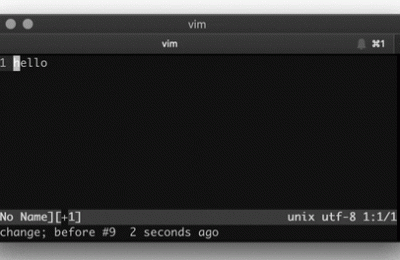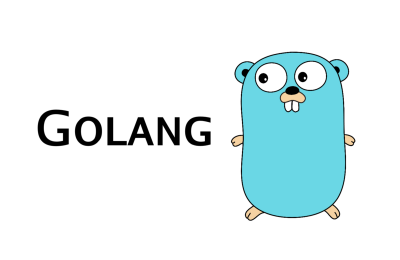目录
最近研究JavaScript里的this,搞的有点晕,不过找到一篇总结的不错的文章,给大家分享下:https://segmentfault.com/a/1190000003046071
本文主要解释在JS里面this关键字的指向问题(在浏览器环境下)。
首先,必须搞清楚在JS里面,函数的几种调用方式:
- 普通函数调用
- 作为方法来调用
- 作为构造函数来调用
- 使用apply/call方法来调用
- Function.prototype.bind方法
- es6箭头函数
但是不管函数是按哪种方法来调用的,请记住一点:谁调用这个函数或方法,this关键字就指向谁。
接下来就分情况来讨论下这些不同的情况:
普通函数调用
function person(){
this.name="xl";
console.log(this);
console.log(this.name);
}
person(); //输出 window xl
在这段代码中person函数作为普通函数调用,实际上person是作为全局对象window的一个方法来进行调用的,即window.person();
所以这个地方是window对象调用了person方法,那么person函数当中的this即指window,同时window还拥有了另外一个属性name,值为xl.
var name="xl";
function person(){
console.log(this.name);
}
person(); //输出 xl同样这个地方person作为window的方法来调用,在代码的一开始定义了一个全局变量name,值为xl,它相当于window的一个属性,即window.name="xl",又因为在调用person的时候this是指向window的,因此这里会输出xl.
作为方法来调用
在上面的代码中,普通函数的调用即是作为window对象的方法进行调用。显然this关键字指向了window对象.
再来看下其他的形式
var name="XL";
var person={
name:"xl",
showName:function(){
console.log(this.name);
}
}
person.showName(); //输出 xl
//这里是person对象调用showName方法,很显然this关键字是指向person对象的,所以会输出name
var showNameA=person.showName;
showNameA(); //输出 XL
//这里将person.showName方法赋给showNameA变量,此时showNameA变量相当于window对象的一个属性,因此showNameA()执行的时候相当于window.showNameA(),即window对象调用showNameA这个方法,所以this关键字指向window再换种形式:
var personA={
name:"xl",
showName:function(){
console.log(this.name);
}
}
var personB={
name:"XL",
sayName:personA.showName
}
personB.sayName(); //输出 XL
//虽然showName方法是在personA这个对象中定义,但是调用的时候却是在personB这个对象中调用,因此this对象指向作为构造函数来调用
function Person(name){
this.name=name;
}
var personA=Person("xl");
console.log(personA.name); // 输出 undefined
console.log(window.name);//输出 xl
//上面代码没有进行new操作,相当于window对象调用Person("xl")方法,那么this指向window对象,并进行赋值操作window.name="xl".
var personB=new Person("xl");
console.log(personB.name);// 输出 xl
//这部分代码的解释见下
new操作符
//下面这段代码模拟了new操作符(实例化对象)的内部过程
function person(name){
var o={};
o.__proto__=Person.prototype; //原型继承
Person.call(o,name);
return o;
}
var personB=person("xl");
console.log(personB.name); // 输出 xl
- 在
person里面首先创建一个空对象o,将o的proto指向Person.prototype完成对原型的属性和方法的继承 Person.call(o,name)这里即函数Person作为apply/call调用(具体内容下方),将Person对象里的this改为o,即完成了o.name=name操作- 返回对象o。
因此`person("xl")`返回了一个继承了`Person.prototype`对象上的属性和方法,以及拥有`name`属性为"xl"的对象,并将它赋给变量`personB`. 所以`console.log(personB.name)`会输出"xl"
call/apply方法的调用
在JS里函数也是对象,因此函数也有方法。从Function.prototype上继承到Function.prototype.call/Function.prototype.apply方法
call/apply方法最大的作用就是能改变this关键字的指向.
Obj.method.apply(AnotherObj,arguments);
var name="XL";
var Person={
name:"xl",
showName:function(){
console.log(this.name);
}
}
Person.showName.call(); //输出 "XL"
//这里call方法里面的第一个参数为空,默认指向window。
//虽然showName方法定义在Person对象里面,但是使用call方法后,将showName方法里面的this指向了window。因此最后会输出"XL"; funtion FruitA(n1,n2){
this.n1=n1;
this.n2=n2;
this.change=function(x,y){
this.n1=x;
this.n2=y;
}
}
var fruitA=new FruitA("cheery","banana");
var FruitB={
n1:"apple",
n2:"orange"
};
fruitA.change.call(FruitB,"pear","peach");
console.log(FruitB.n1); //输出 pear
console.log(FruitB.n2);// 输出 peachFruitB调用fruitA的change方法,将fruitA中的this绑定到对象FruitB上。
Function.prototype.bind()方法
var name="XL";
function Person(name){
this.name=name;
this.sayName=function(){
setTimeout(function(){
console.log("my name is "+this.name);
},50)
}
}
var person=new Person("xl");
person.sayName() //输出 “my name is XL”;
//这里的setTimeout()定时函数,相当于window.setTimeout(),由window这个全局对象对调用,因此this的指向为window, 则this.name则为XL 那么如何才能输出"my name is xl"呢?
var name="XL";
function Person(name){
this.name=name;
this.sayName=function(){
setTimeout(function(){
console.log("my name is "+this.name);
}.bind(this),50) //注意这个地方使用的bind()方法,绑定setTimeout里面的匿名函数的this一直指向Person对象
}
}
var person=new Person("xl");
person.sayName(); //输出 “my name is xl”;这里setTimeout(function(){console.log(this.name)}.bind(this),50);,匿名函数使用bind(this)方法后创建了新的函数,这个新的函数不管在什么地方执行,this都指向的Person,而非window,因此最后的输出为”my name is xl”而不是”my name is XL”
另外几个需要注意的地方:
setTimeout/setInterval/匿名函数执行的时候,this默认指向window对象,除非手动改变this的指向。在《javascript高级程序设计》当中,写到:“超时调用的代码(setTimeout)都是在全局作用域中执行的,因此函数中的this的值,在非严格模式下是指向window对象,在严格模式下是指向undefined”。本文都是在非严格模式下的情况。
var name="XL";
function Person(){
this.name="xl";
this.showName=function(){
console.log(this.name);
}
setTimeout(this.showName,50);
}
var person=new Person(); //输出 "XL"
//在setTimeout(this.showName,50)语句中,会延时执行this.showName方法
//this.showName方法即构造函数Person()里面定义的方法。50ms后,执行this.showName方法,this.showName里面的this此时便指向了window对象。则会输出"XL";修改上面的代码:
var name="XL";
function Person(){
this.name="xl";
var that=this;
this.showName=function(){
console.log(that.name);
}
setTimeout(this.showName,50)
}
var person=new Person(); //输出 "xl"
//这里在Person函数当中将this赋值给that,即让that保存Person对象,因此在setTimeout(this.showName,50)执行过程当中,console.log(that.name)即会输出Person对象的属性"xl"匿名函数:
var name="XL";
var person={
name:"xl",
showName:function(){
console.log(this.name);
}
sayName:function(){
(function(callback){
callback();
})(this.showName)
}
}
person.sayName(); //输出 XL var name="XL";
var person={
name:"xl",
showName:function(){
console.log(this.name);
}
sayName:function(){
var that=this;
(function(callback){
callback();
})(that.showName)
}
}
person.sayName() ; //输出 "xl"
//匿名函数的执行同样在默认情况下this是指向window的,除非手动改变this的绑定对象Eval函数
该函数执行的时候,this绑定到当前作用域的对象上
var name="XL";
var person={
name:"xl",
showName:function(){
eval("console.log(this.name)");
}
}
person.showName(); //输出 "xl"
var a=person.showName;
a(); //输出 "XL"箭头函数
es6里面this指向固定化,始终指向外部对象,因为箭头函数没有this,因此它自身不能进行new实例化,同时也不能使用call, apply, bind等方法来改变this的指向
function Timer() {
this.seconds = 0;
setInterval( () => this.seconds ++, 1000);
}
var timer = new Timer();
setTimeout( () => console.log(timer.seconds), 3100);
// 3
在构造函数内部的setInterval()内的回调函数,this始终指向实例化的对象,并获取实例化对象的seconds的属性,每1s这个属性的值都会增加1。否则最后在3s后执行setTimeOut()函数执行后输出的是0 微信扫一扫
微信扫一扫
 支付宝扫一扫
支付宝扫一扫





![[开源] Discuz! 插件 – 帖子推广/支付通知管理员插图 [开源] Discuz! 插件 – 帖子推广/支付通知管理员插图](https://jingine.com/wp-content/uploads/2020/02/unnamed-400x260.png)